karol snowboarding camp
words and images courtesy chris karol
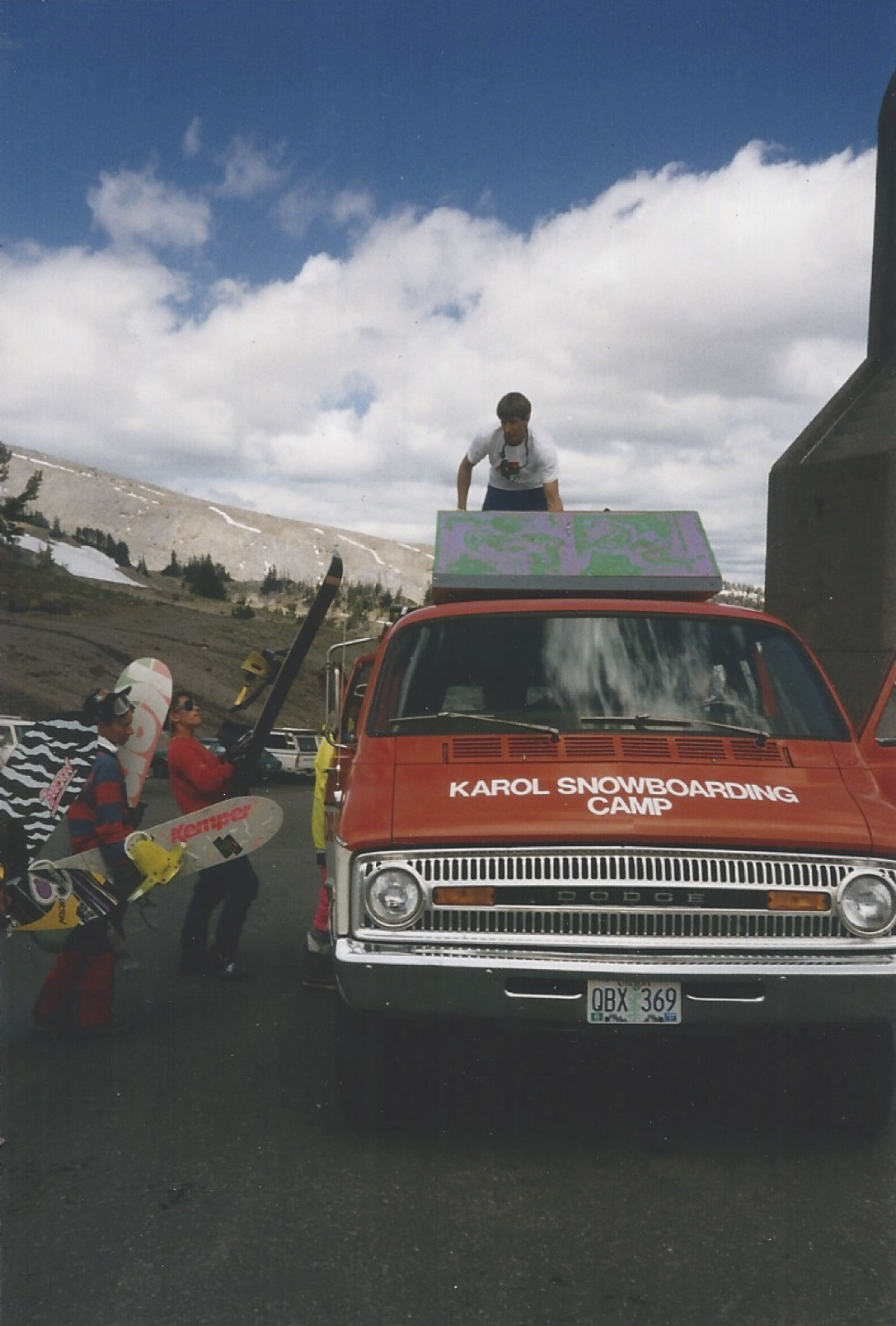
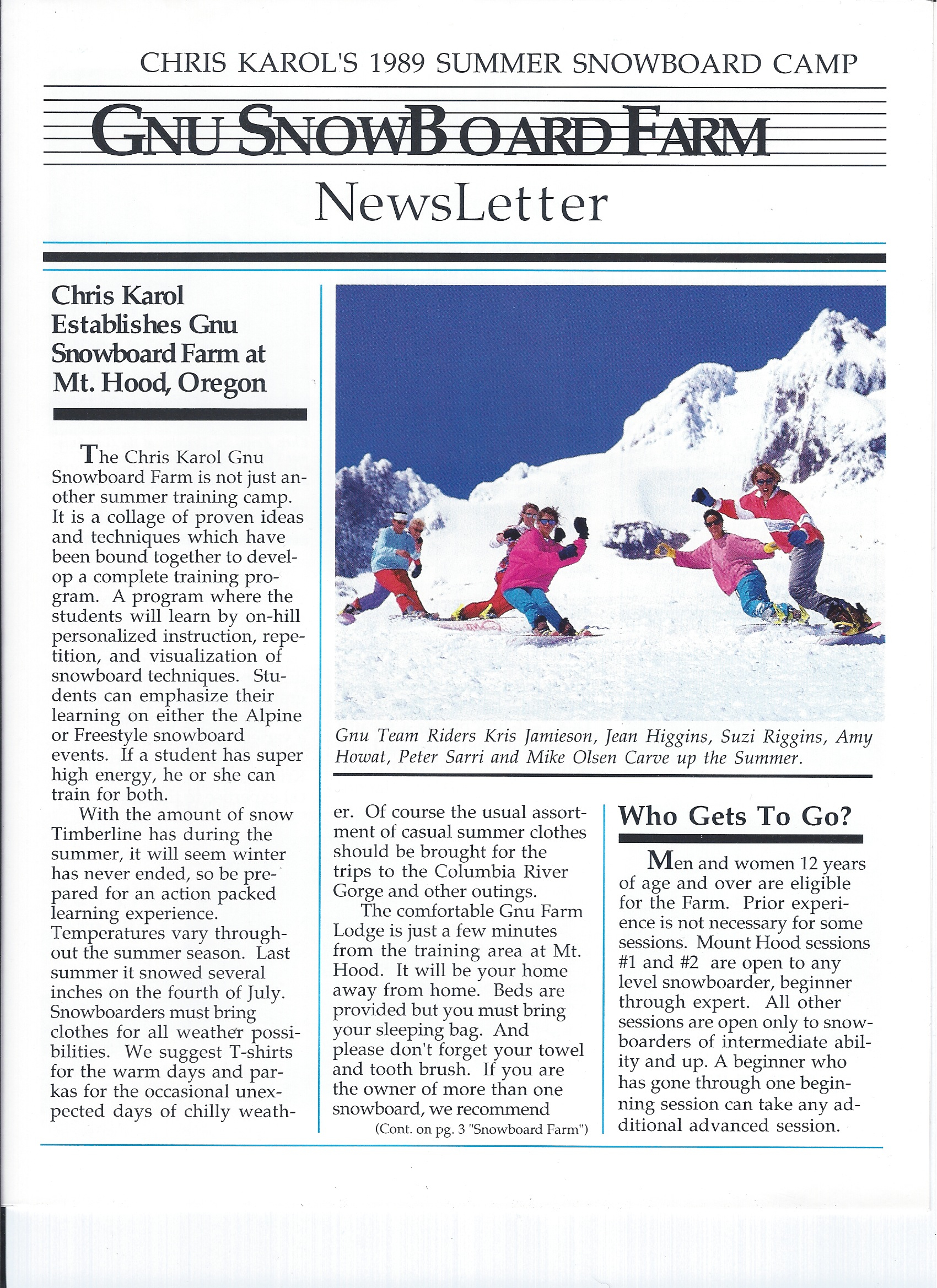
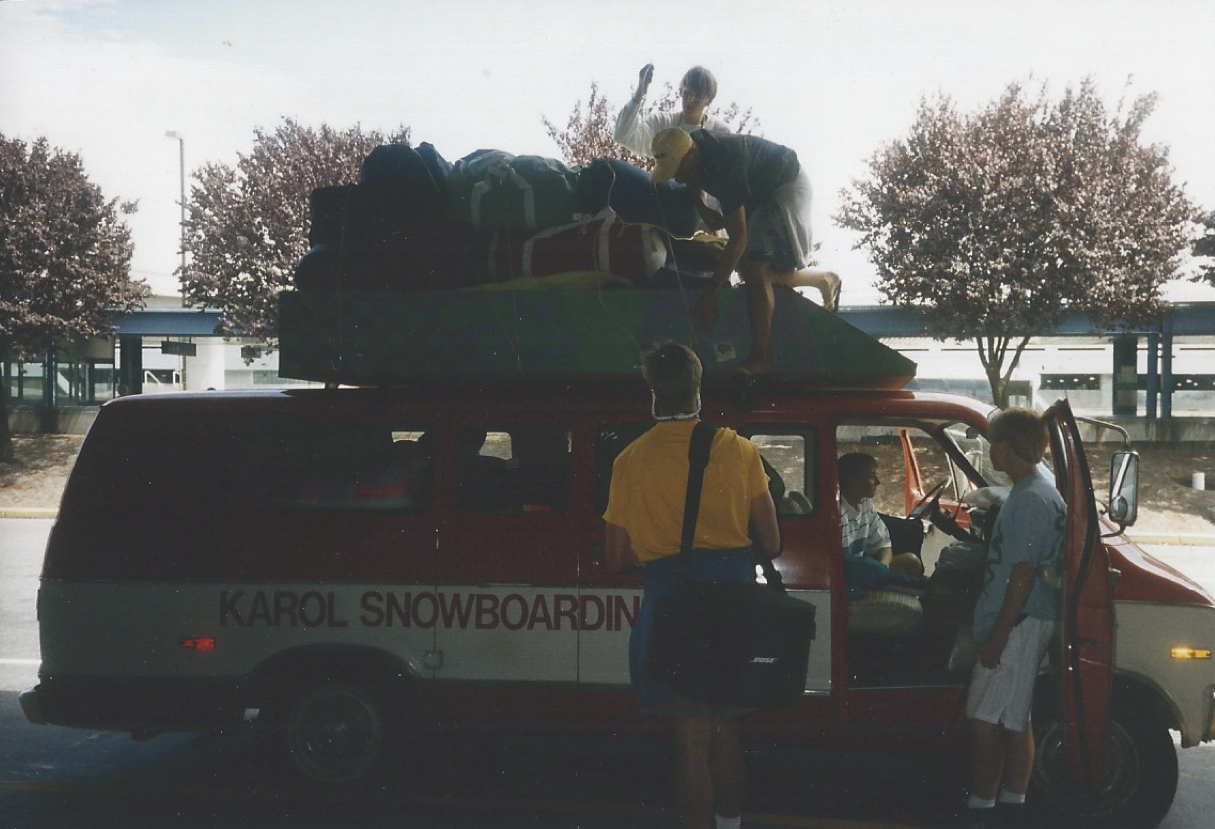
Arrival.
I came to Mt. Hood in 1988 to coach for John Hartung’s Rebel Snowboarding Camp with Kris Jamieson and Mike Estes. It was loosely organized so we adopted our 1 camper, Mr. Jubal Reynolds, as our own and taught him how to be a guest of the world, snowboarder style! With no halfpipe or lane to train on, the routine was simple. Ride in the mornings, then skate, mountain bike, swim, hike, and otherwise jackass around. It was a blast!
Government Camp.
Government Camp was a quiet ski-racer town at the time and the presence of snowboarders did not go unnoticed. We loved the attention and embraced the differences between skiing and snowboarding. The huge amount of snow at Hood was also an inspiration and I realized we could take a whole new approach to building halfpipes. Instead of building snowbanks we could dig holes! And it was obvious that putting a house full of snowboarders in right in the middle of Govy would be a recipe for endless entertainment and off-hill shenanigans!
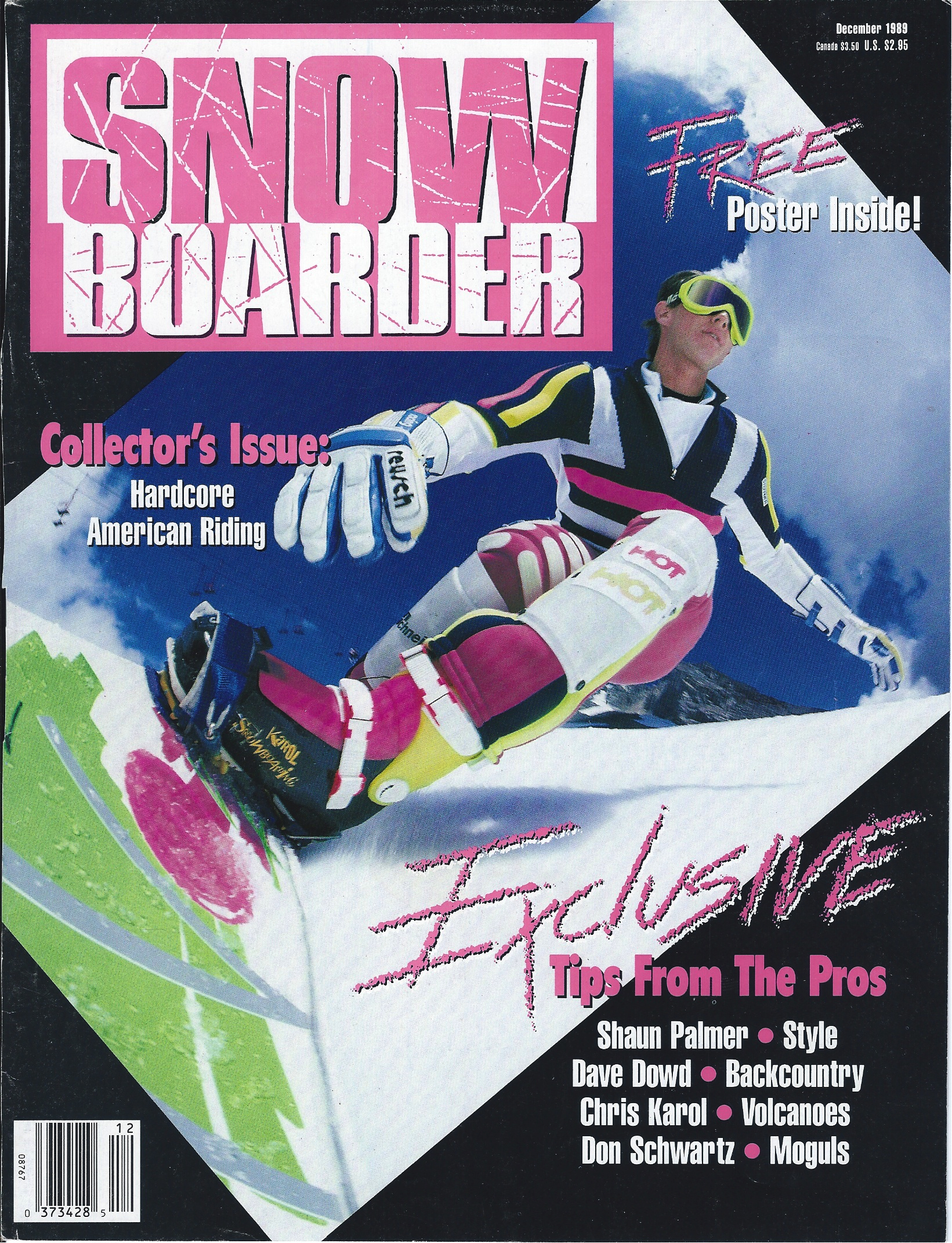
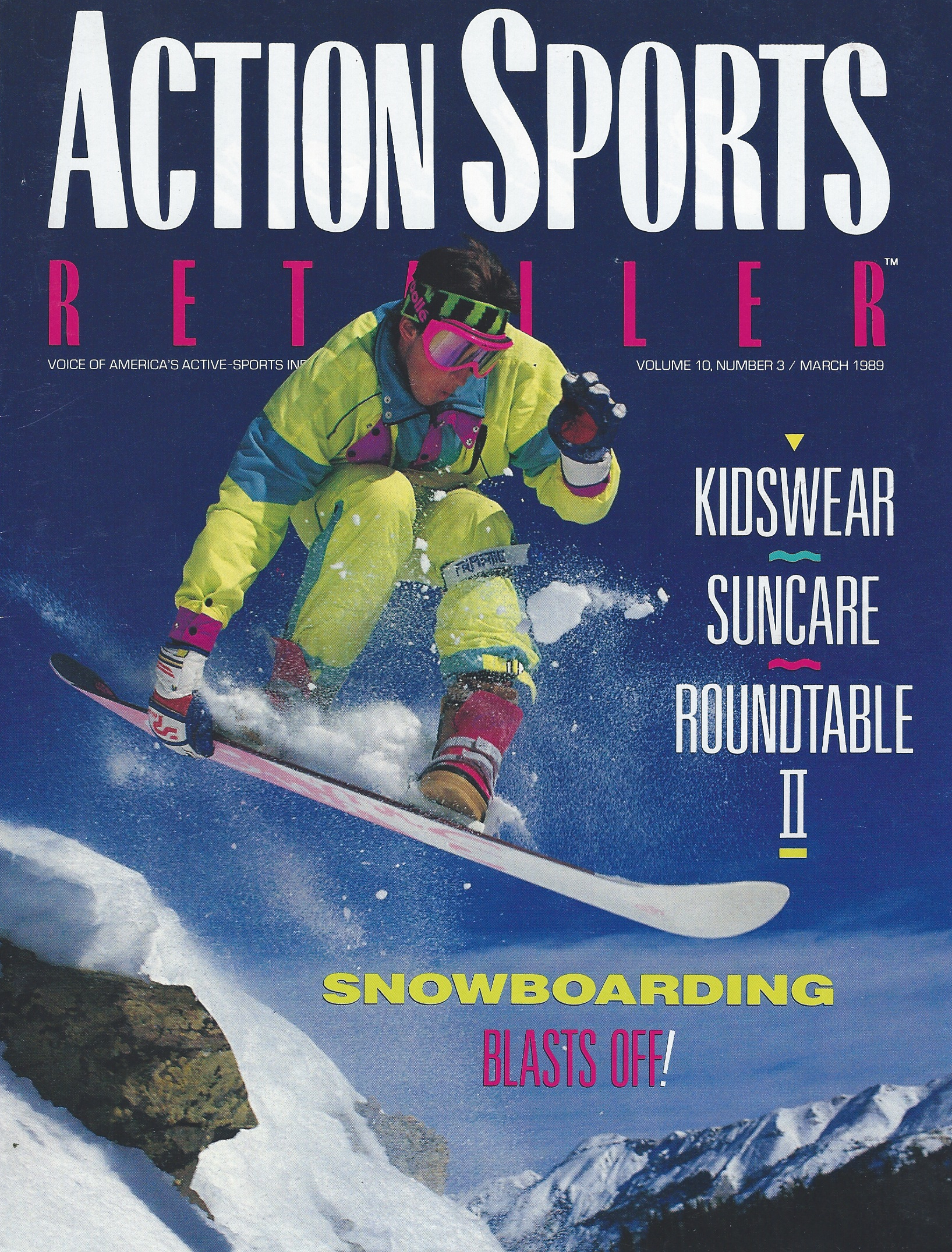

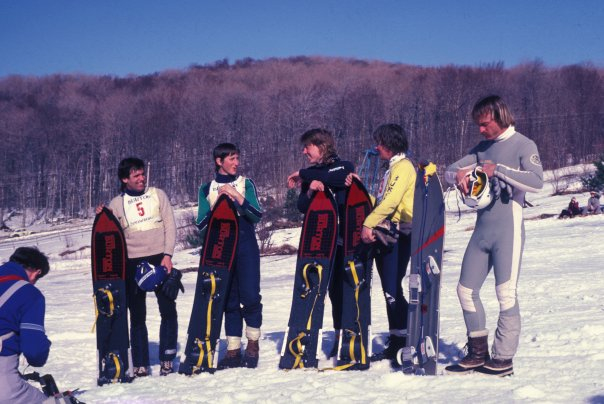
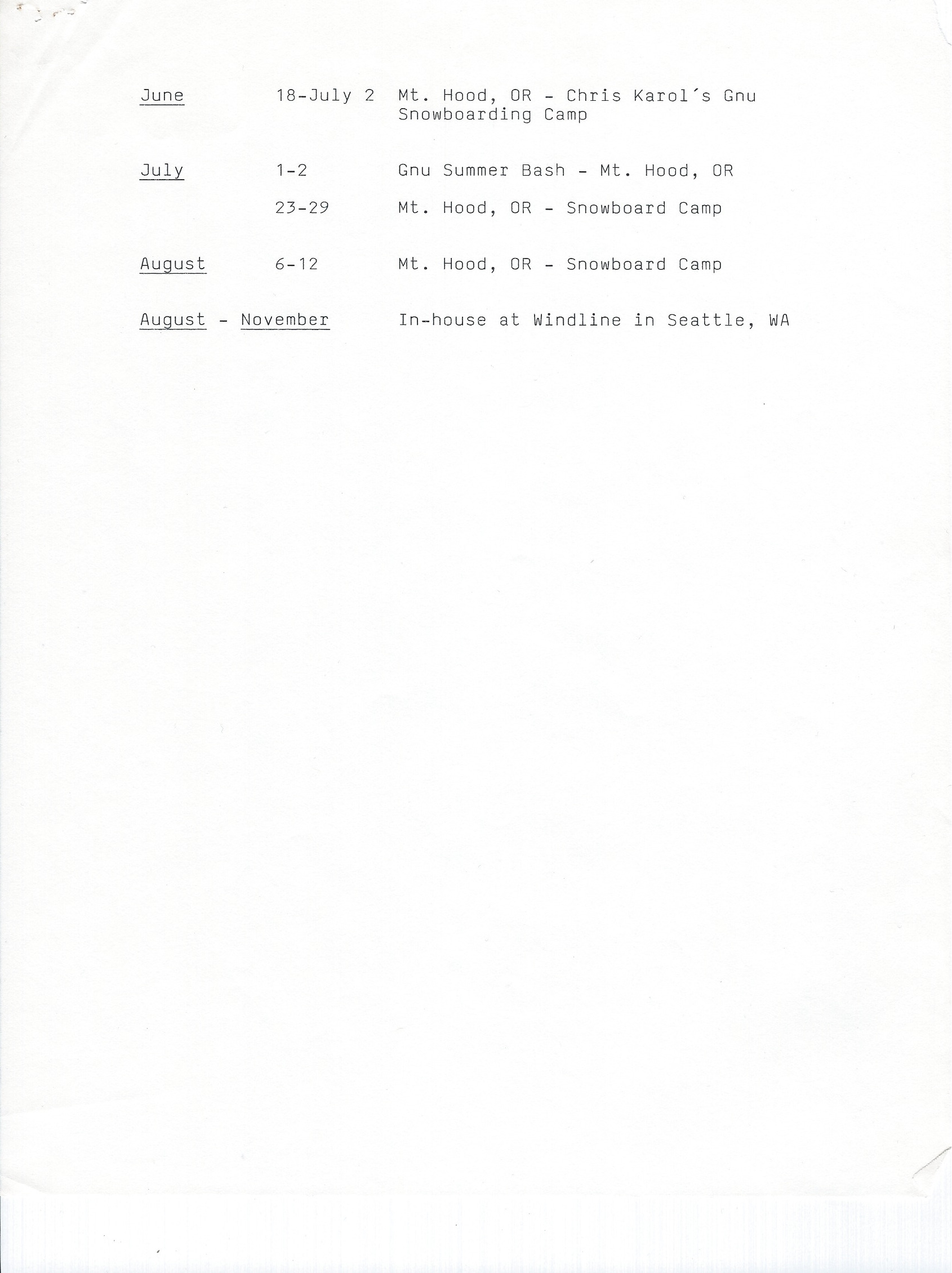
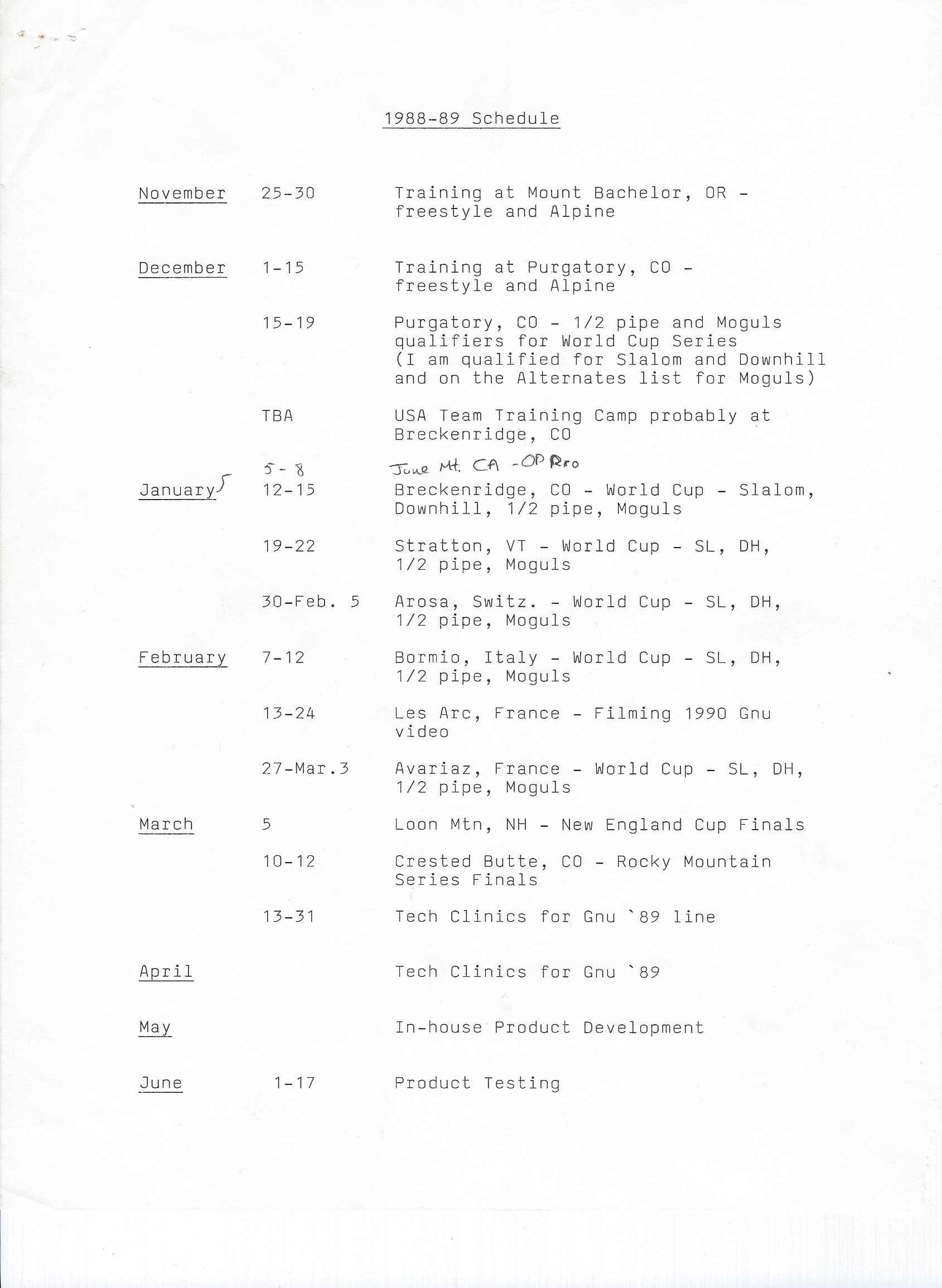
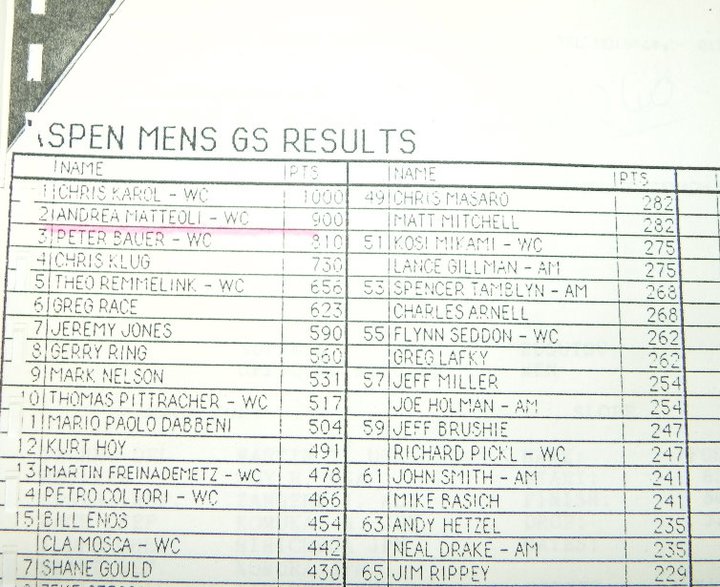
The First-Ever Halfpipe.
The first-ever halfpipe contest had been hosted by Tom Sims and held at the 1983 World Championships in Soda Springs, California. It was a rough-cut pipe with highways and no decks but the vision had been born. 5-years later, state of the art pipes were still only 6-to-8 feet tall. With limited resources, snowboarders had never been able to plow up enough snow to make anything bigger. Inverted airs were still banned in ISF world cup pipe competition and the progression of halfpipe riding had stalled. Uneven walls with inconsistent transitions from top-to-bottom held riders back and limited halfpipes true potential. Heavily sessioned “Highways” developed on take offs that launched riders into the few good landing zones. The rest of the pipe was usually ignored. But with the insane amount of snow on Mt. Hood, it was conceivable to dig a 12-foot deep pipe that would have consistent transitions running the entire length and perfectly flat decks. No highways, with as many lines as possible, and longer than snowboarding had ever seen!
The First Mt. Hood Halfpipe.
Using one of the long fingers of snow that settled between the rocky moraines, the plan was to start by plowing out a 6’-foot deep trench. Next we’d plow out a narrower 6-foot deep trench in the middle of the first cut. The total depth of the combined cuts would be 12-feet, but each wall would then have a 6-foot tall stair-step in the middle. Pipe grooming equipment hadn’t been invented yet so the giant steps would have to be shoveled by hand and raked into transitions, for the entire length of the pipe! It was going to be a massive amount of work. There was also the risk of hitting ground at the bottom and ending up with a huge unridable trench. Nobody knew if the snow would be deep enough but Timberlines Steve Kruse was agreeable to the idea and the plan was hatched!
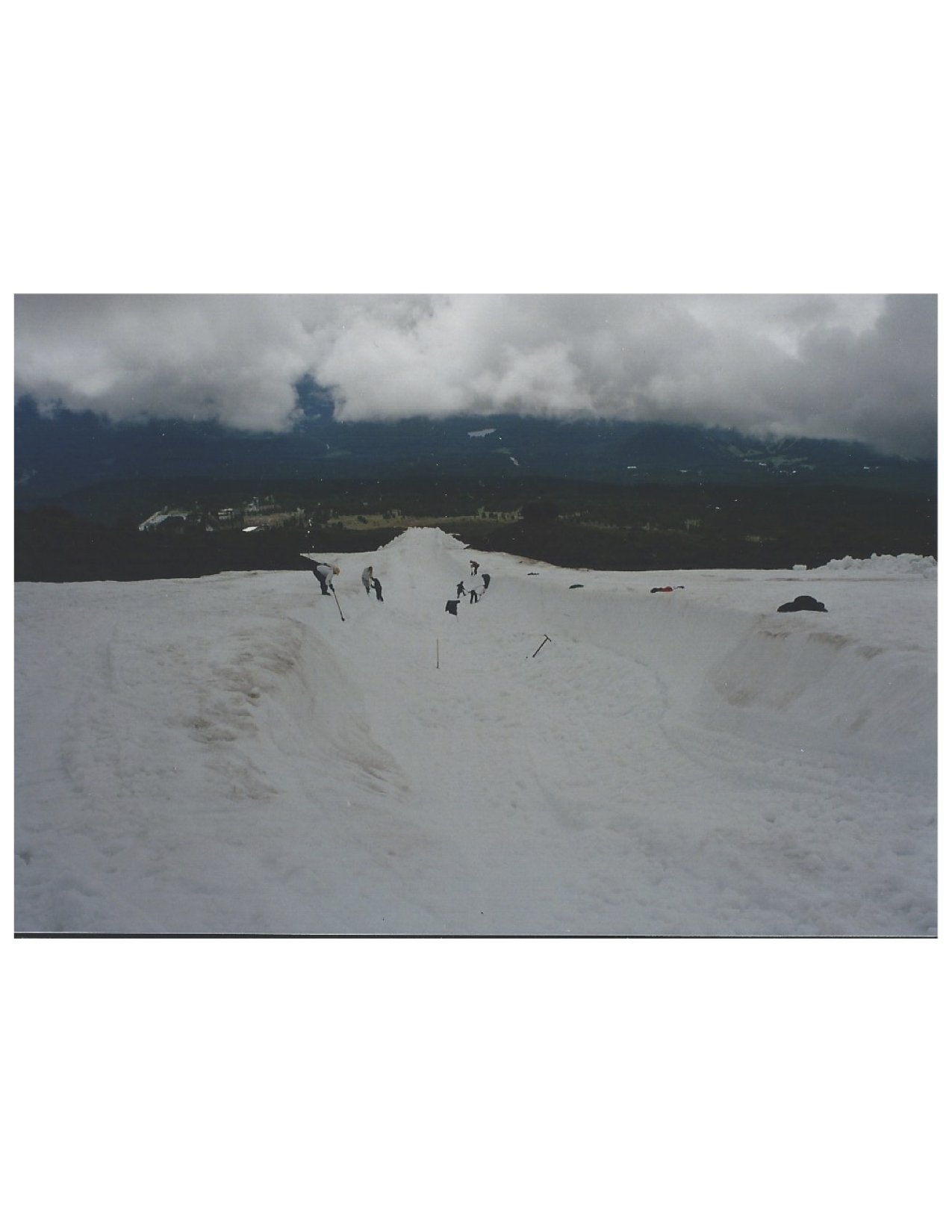
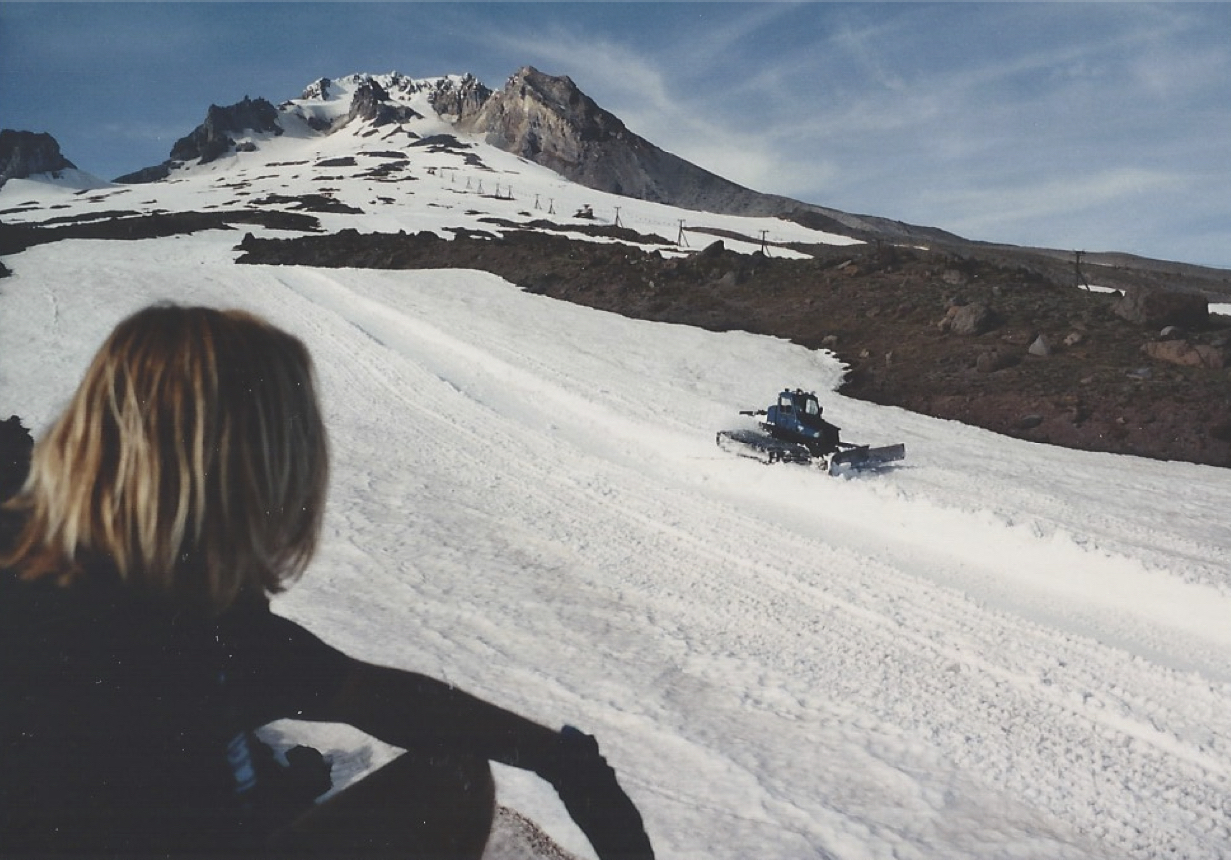
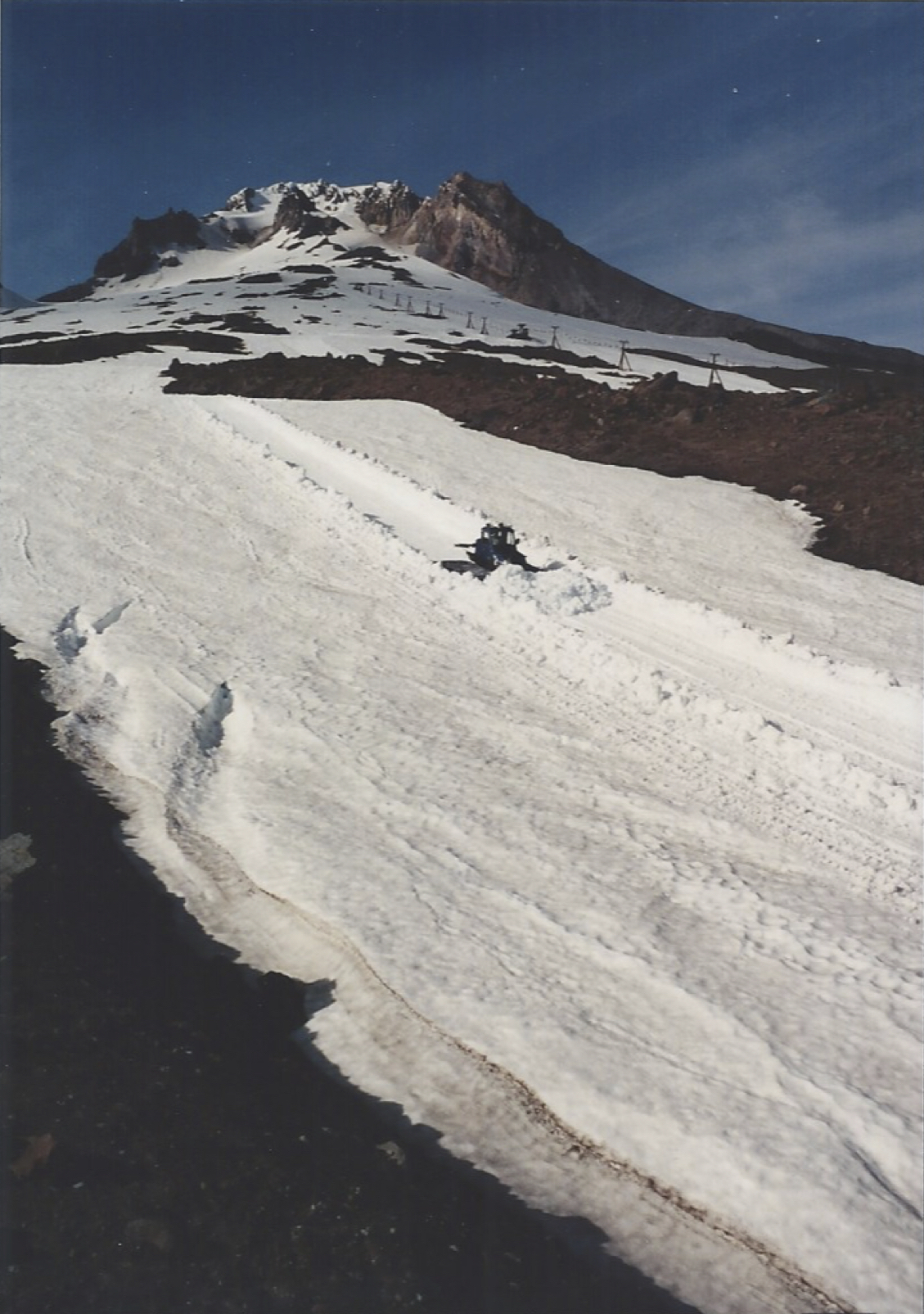
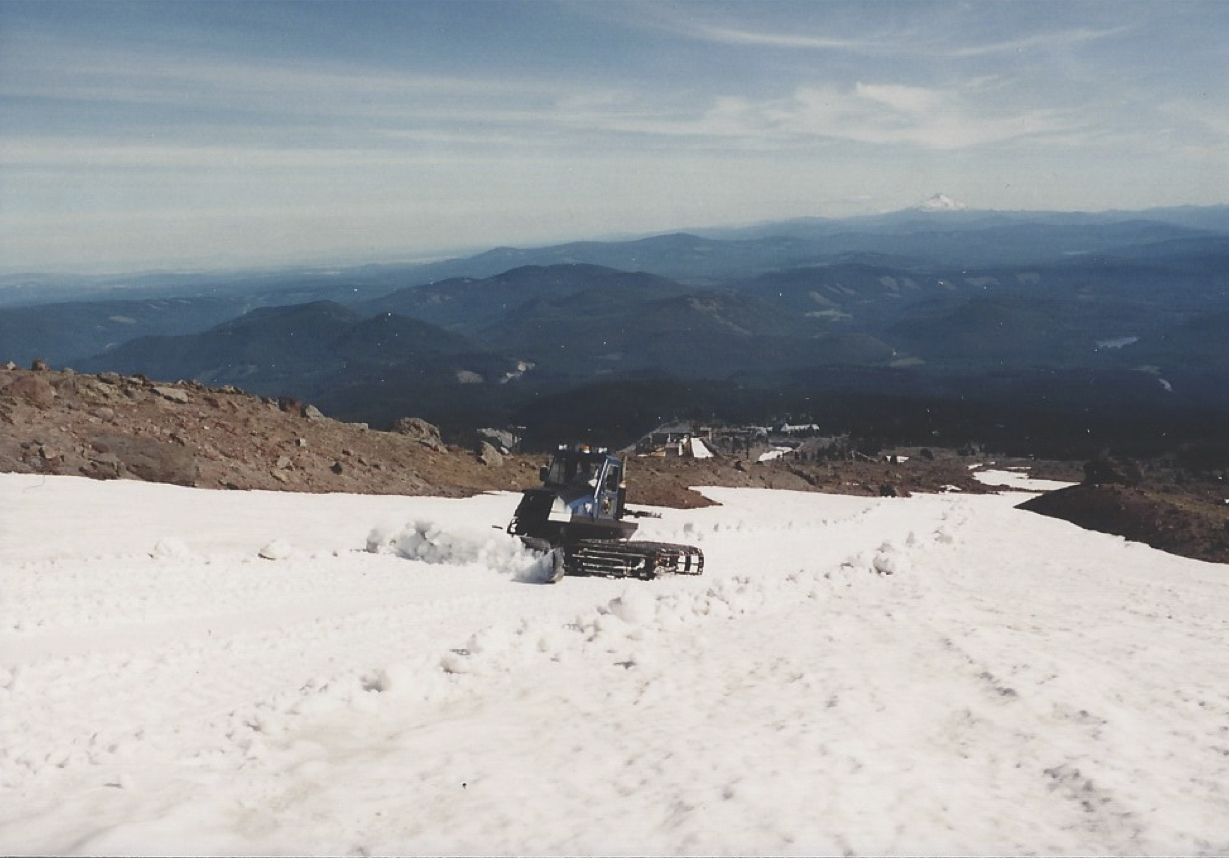
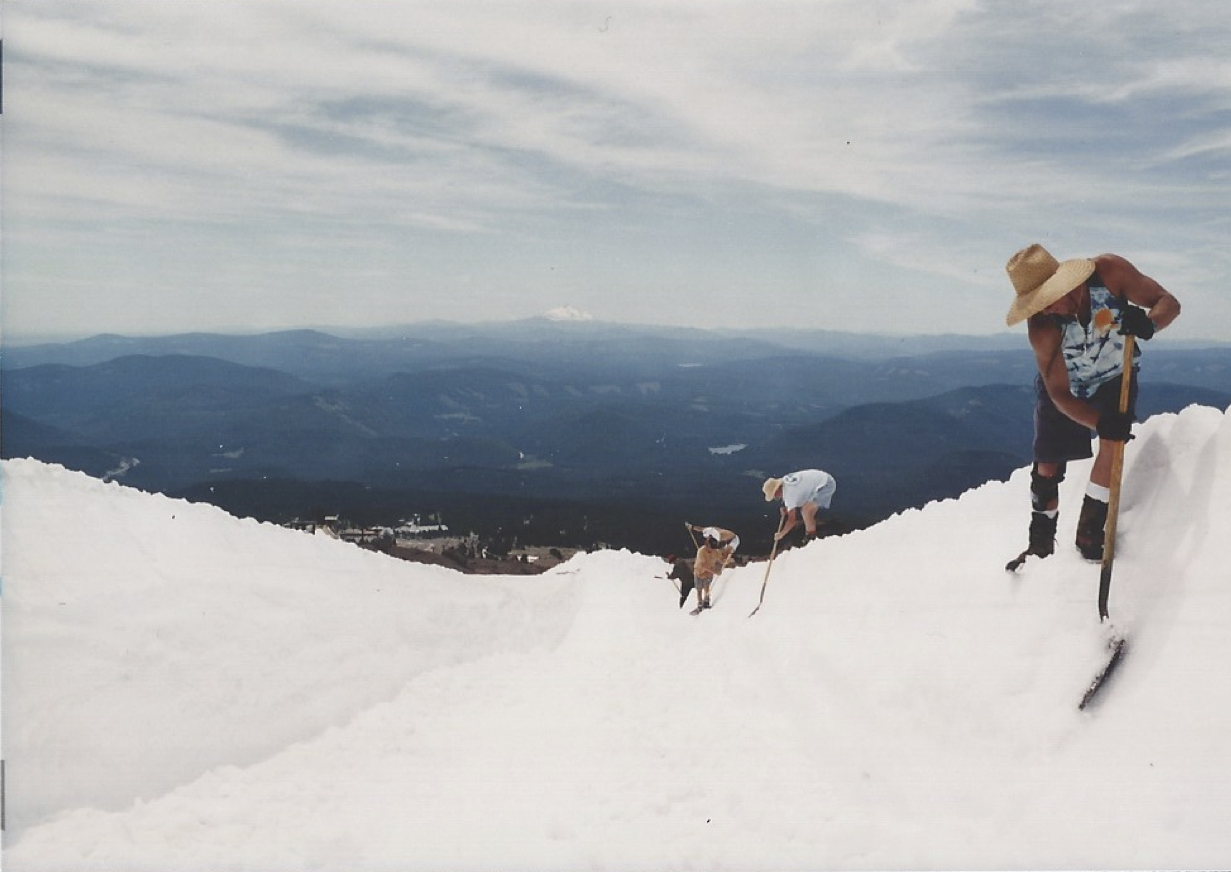
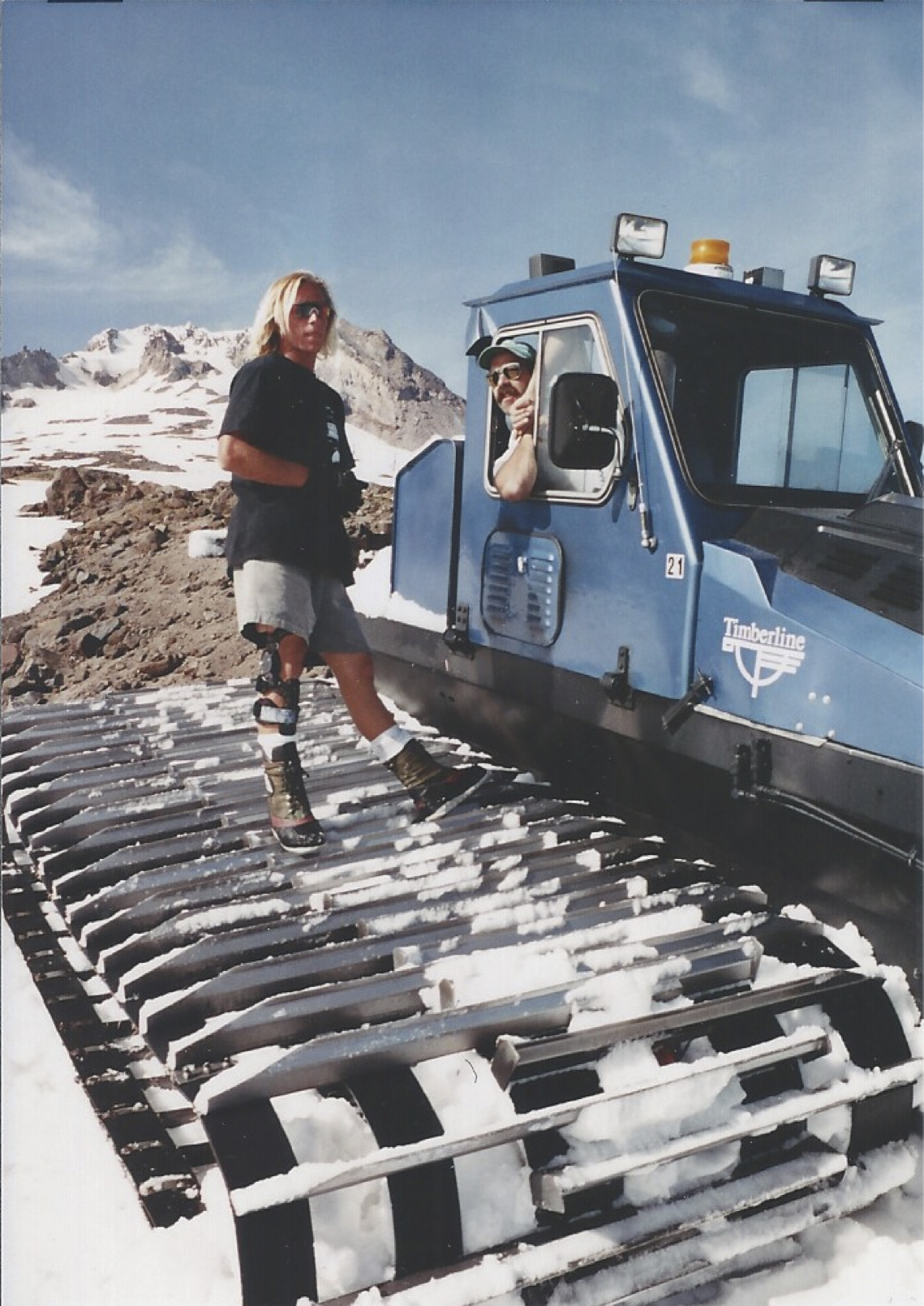
Pro-Status.
I cut back my contest schedule and moved to Seattle for the following winter of 88/89 to work for my sponsor Gnu snowboards as a product designer and traveling Tech Rep. Maintaining my pro-status doing photo shoots, and video’s, I continued to travel and compete as much as possible throughout North America but skipped competing in Europe that winter. It was a pivotal decision for me. Competing in contests was still the most common way for riders and brands to get media coverage. It was an efficient but stressful routine with tight schedules and expensive winter travel. As a top-ranked rider, not competing in Europe was a risk, but Mt. Hood offered the potential to get out of the seasonal rat-race and maximize marketing budgets for my sponsors by creating a summer long event!
In-House at Gnu.
The decision to stay in Seattle and work in-house at Gnu allowed me to finish production on my “Don’t Pat the Dog” instruction video and stay focused on putting the camp together for the upcoming summer on Mt. Hood. As title sponsor for the camp, Gnu printed the brochures and mailed them to their dealers and customers. They also handled inquiries, fielded phone calls and dealt with parents. In exchange, I hired my Gnu teammates as coaches and titled the camp as “The Gnu Snowboard Farm”.

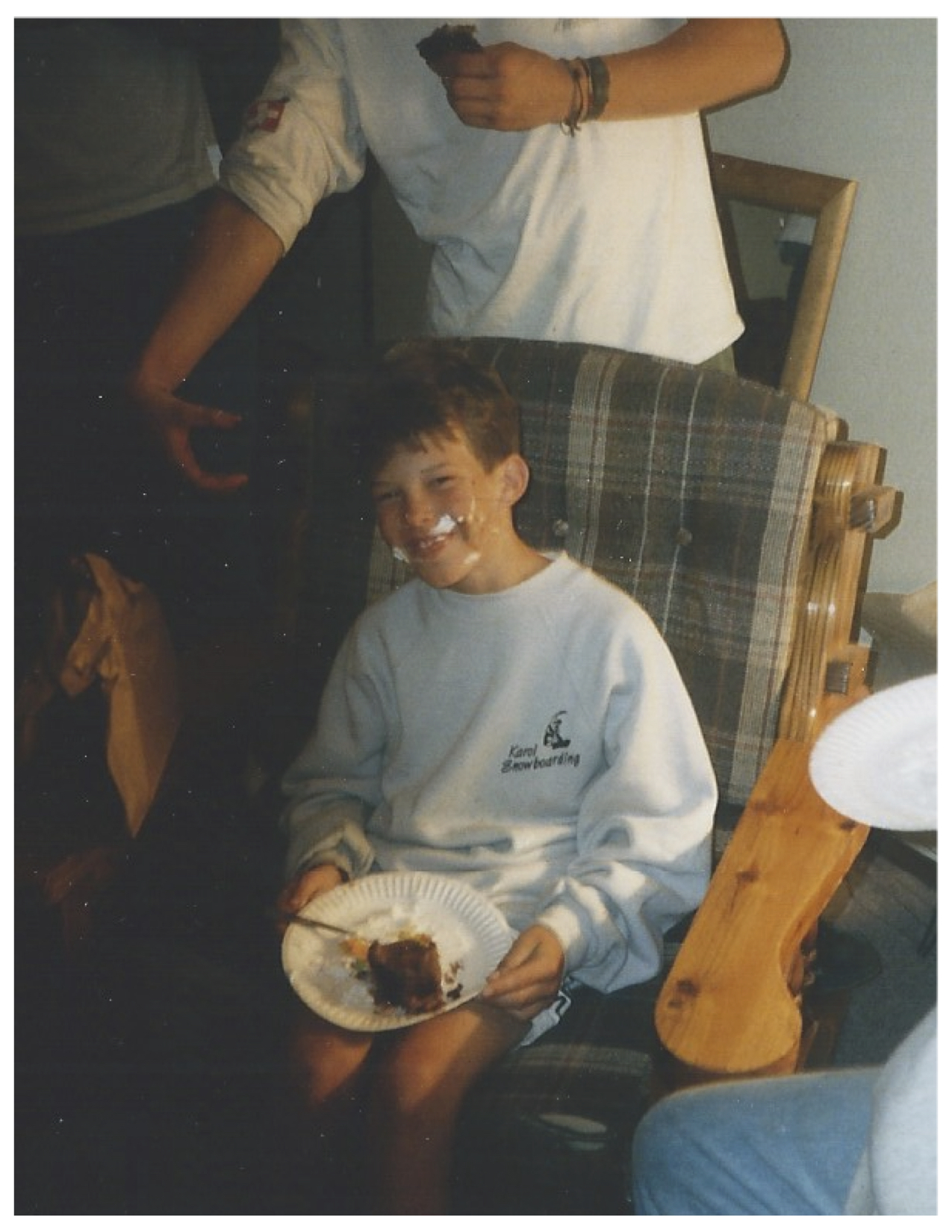
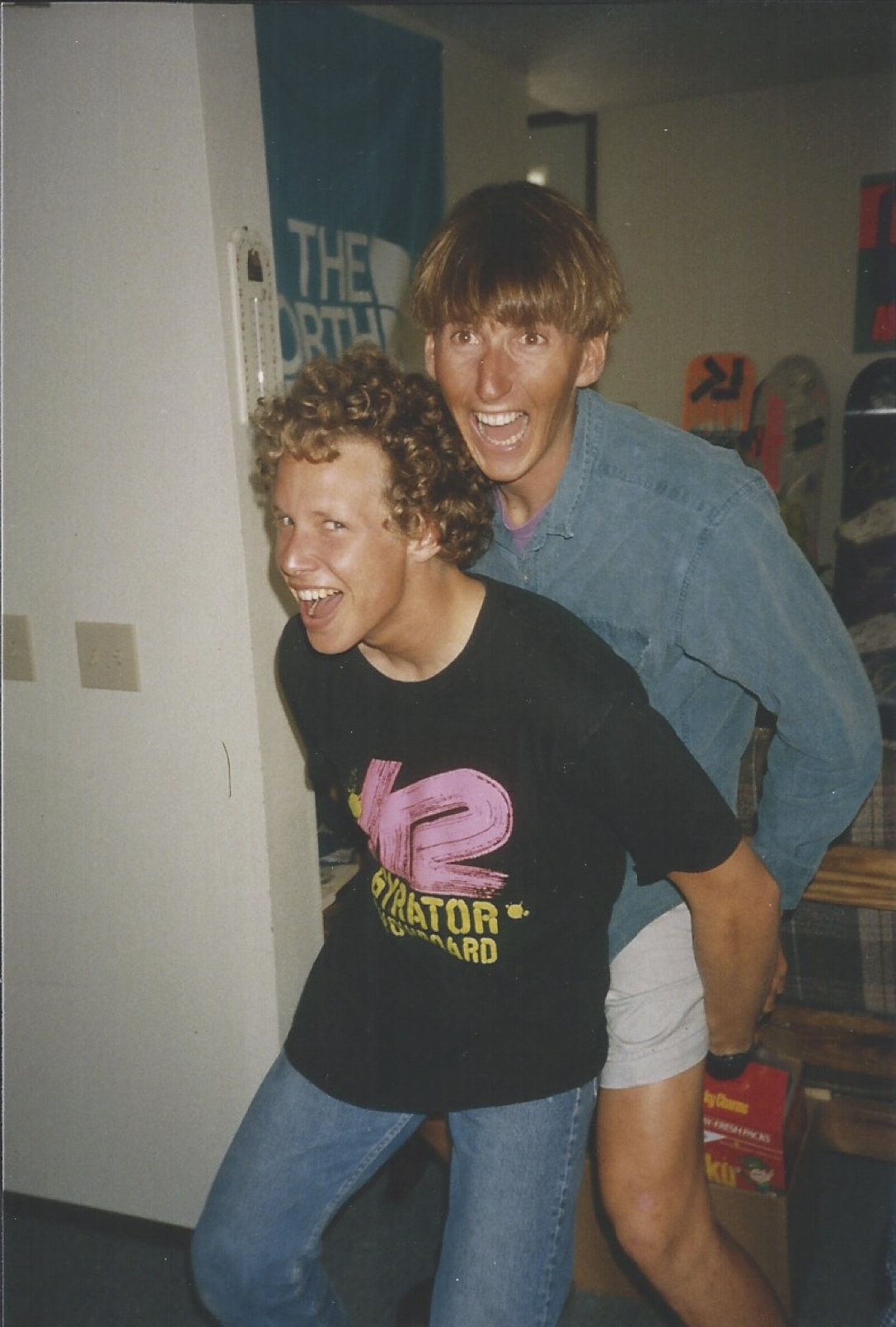

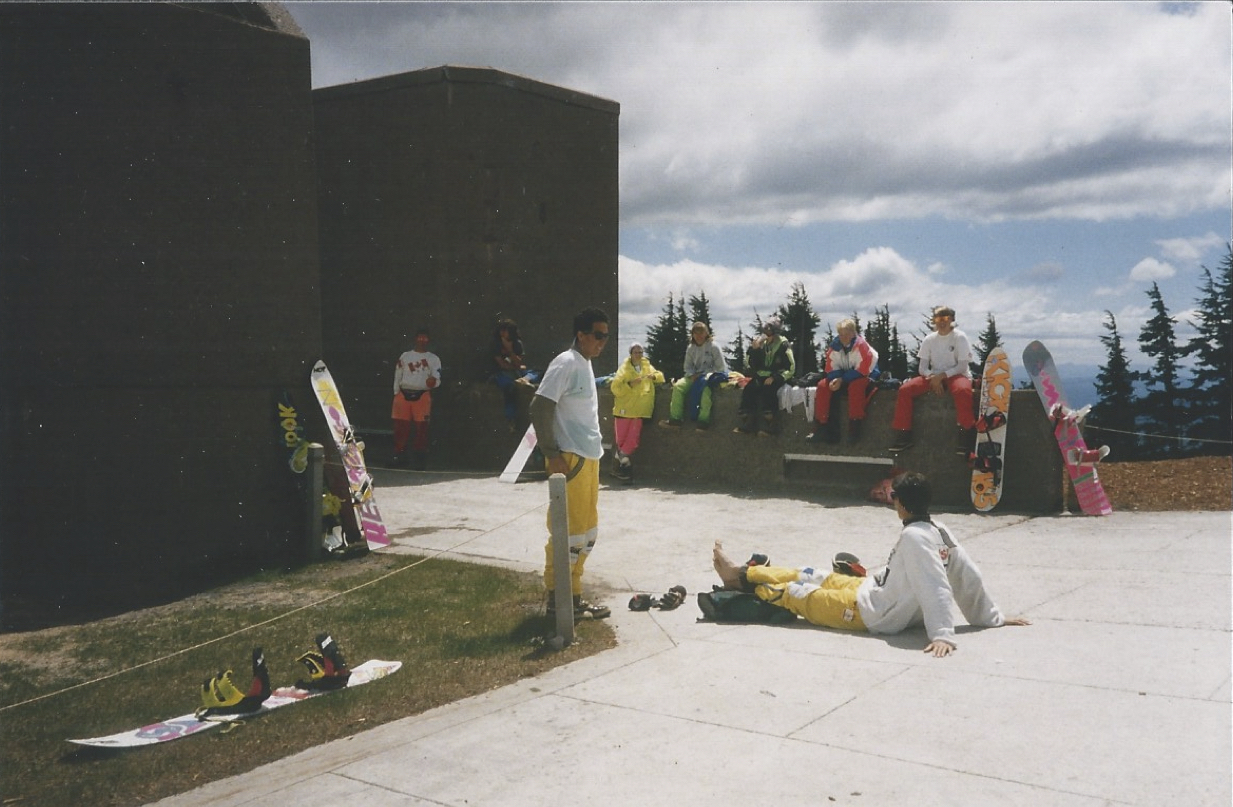
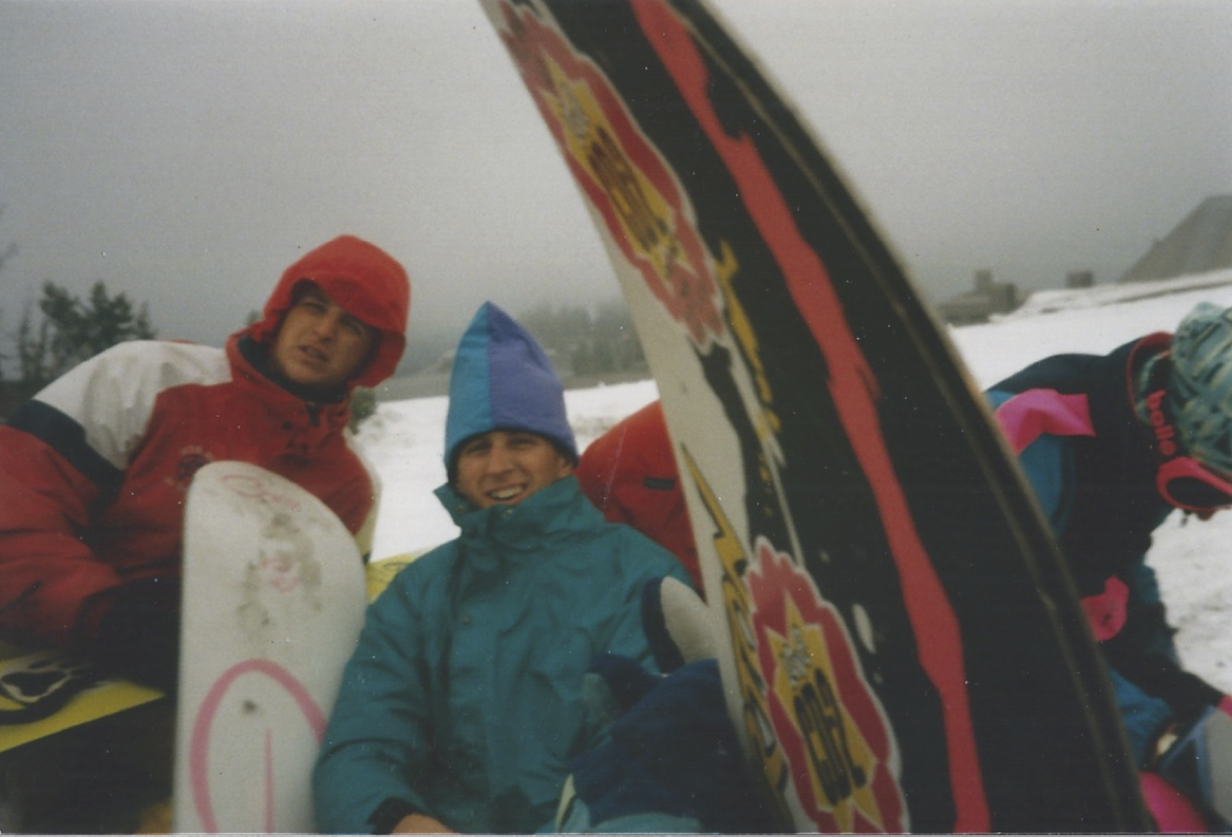
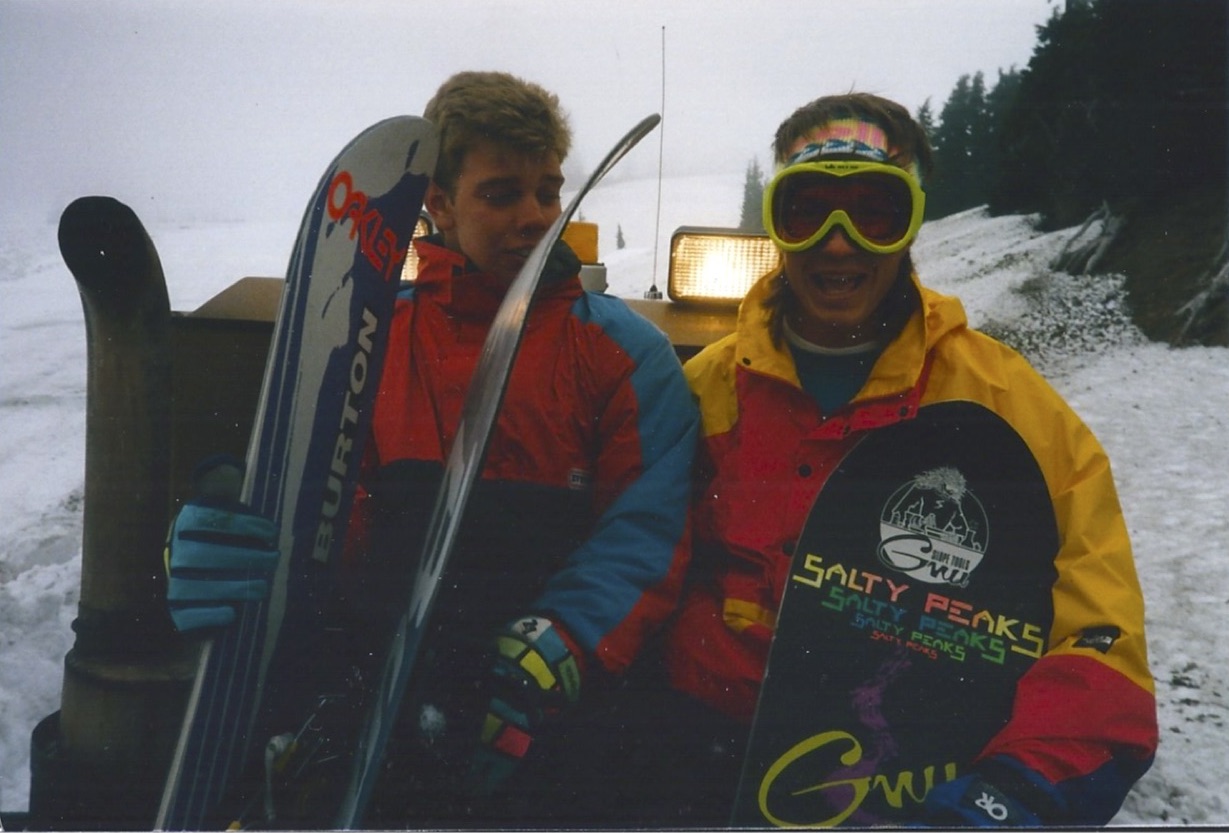
The Camper Registrations.
Price for the all-inclusive 6-day session was $500 and included a personalized VHS video. Continental Airlines provided discounts with a travel agency assisting campers in organizing their flights over the phone. I had no idea if anyone would actually ship their kids off to go hang out with a bunch of snowboarders at Mt. Hood for a week. It seemed like a stretch, but I went ahead, set up the business and started getting ready. I was surprised and relieved when registrations started rolling in and it didn’t take long for sessions to begin filling up.
Session One.
The Karol Snowboarding Camp officially started on June 18th 1989. The entire camp was housed in the building now known as Park Place. It was a madhouse! Coaches off-hill responsibilities ranged from driving airport shuttles, to cooking, shopping, cleaning, entertaining and playing tricks on campers. Coaching on the mountain required early starts followed by afternoon activities and chores. Skating was limited with no ramp but we had a few mountain bikes for campers, went swimming and otherwise loitered around Govy and played in the street. Occasional excursions to Burnside, surfing and trips to Kahneeta took place on weather and off-days but beyond that, campers were usually left to entertain themselves with minimal to no supervision or jump in the van for a Costco run.

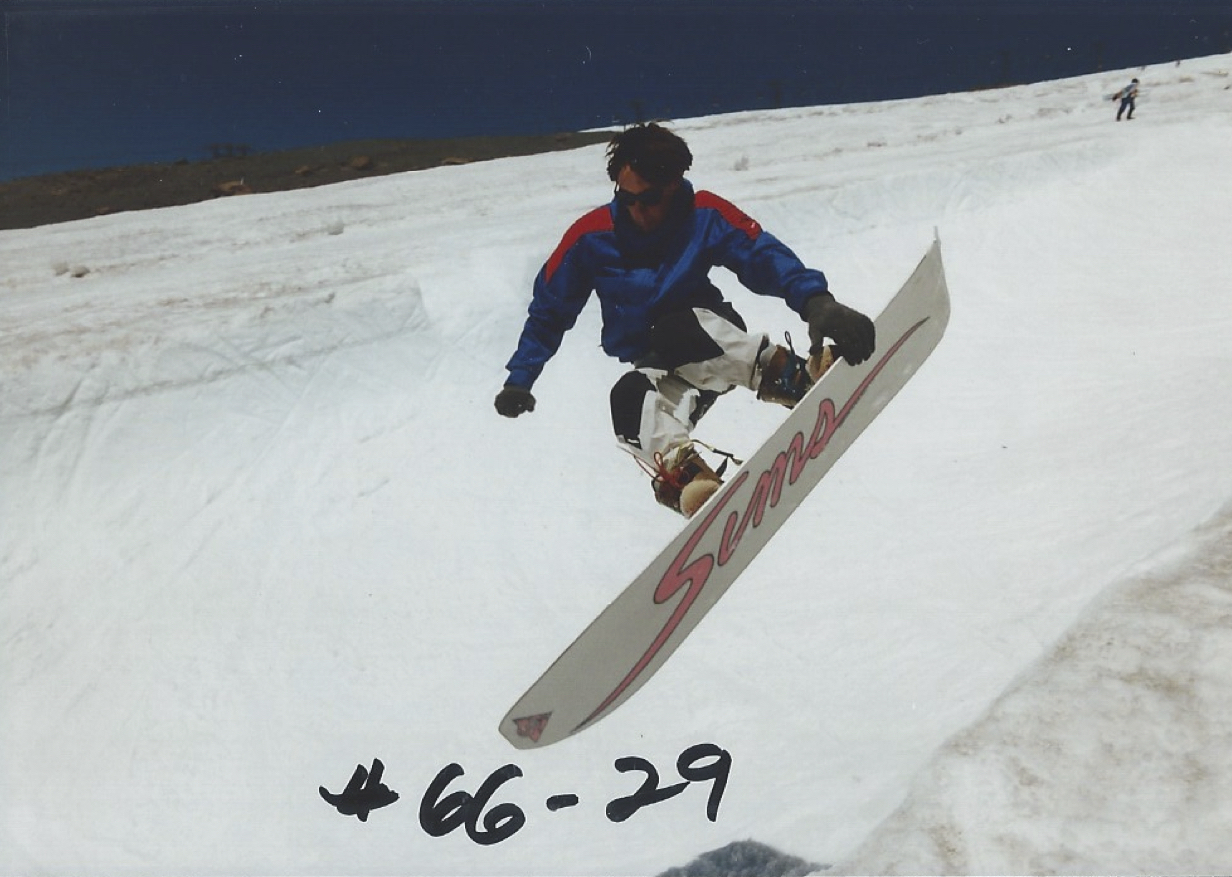
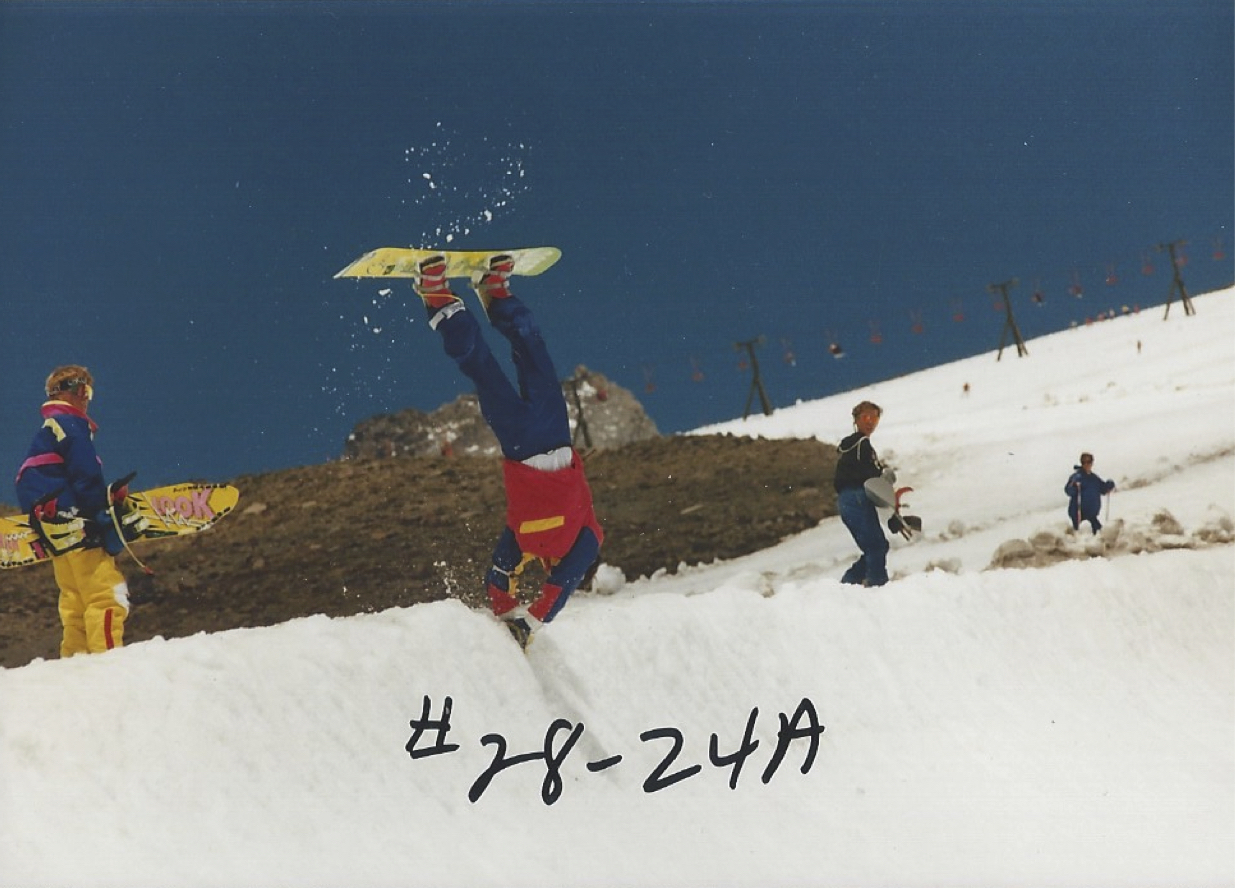

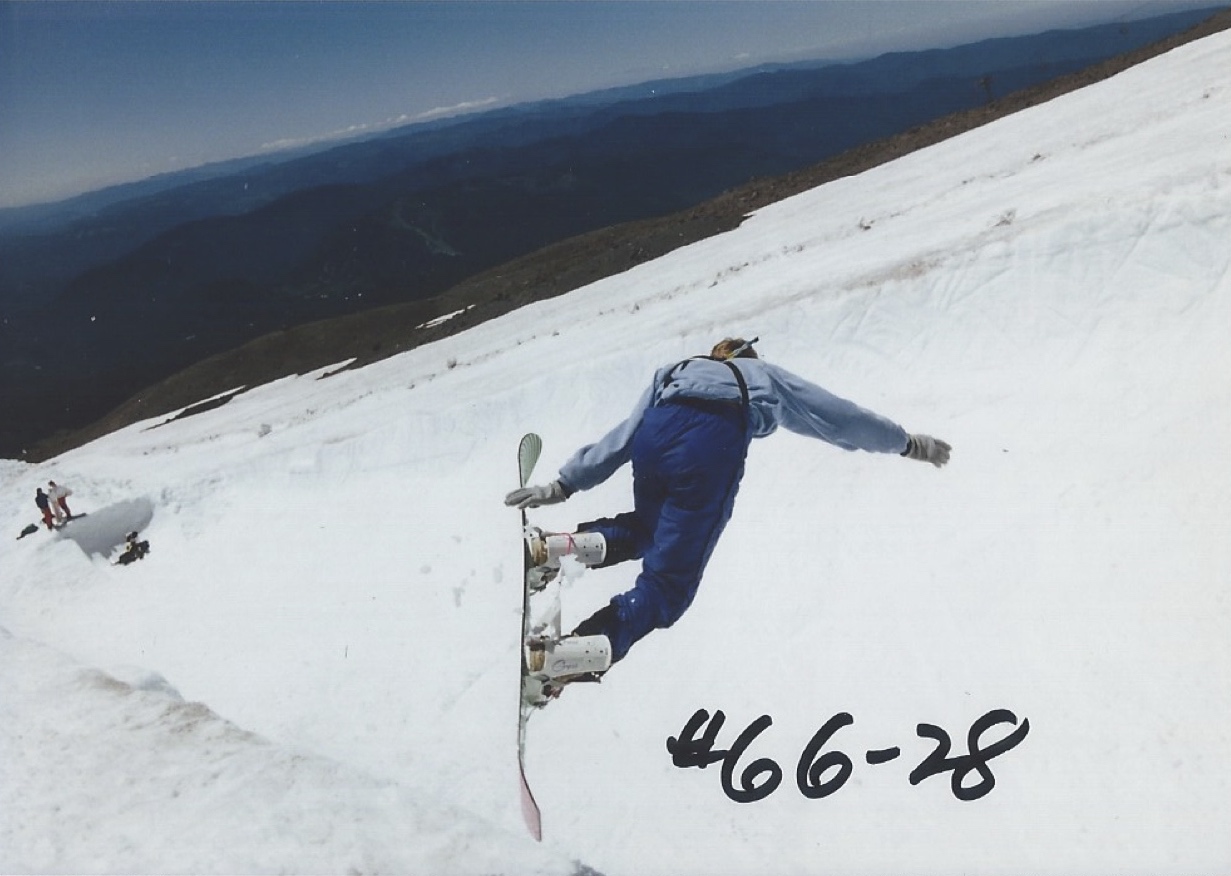
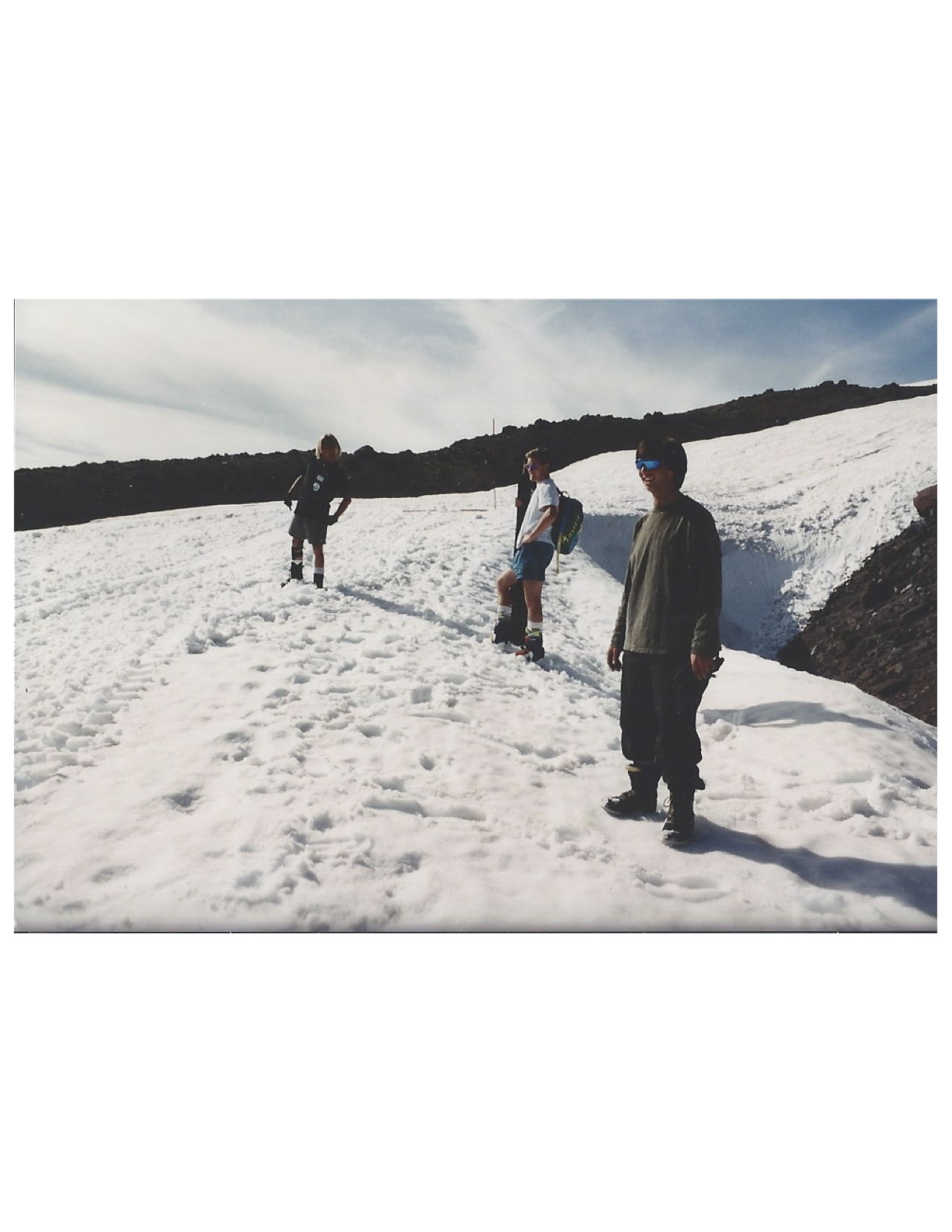
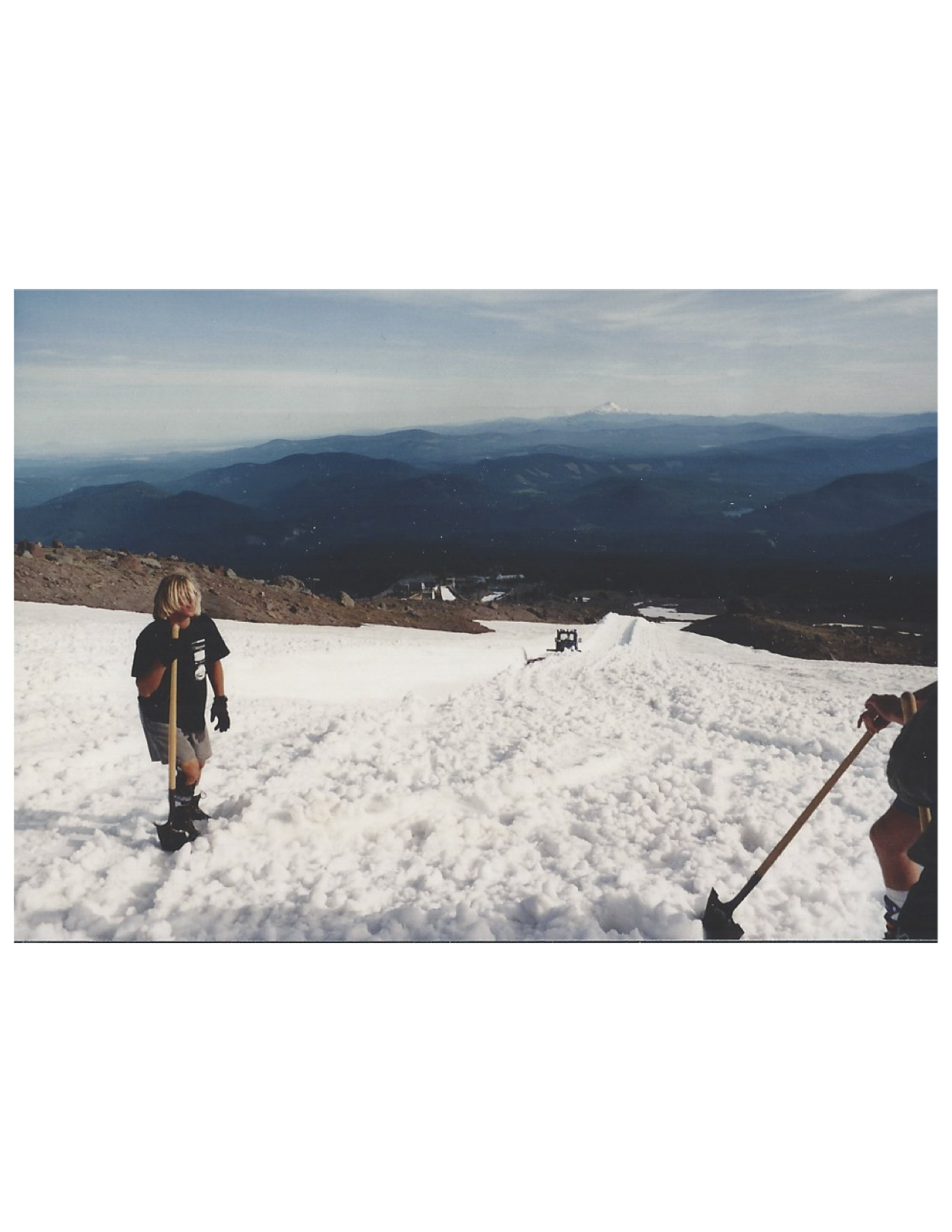
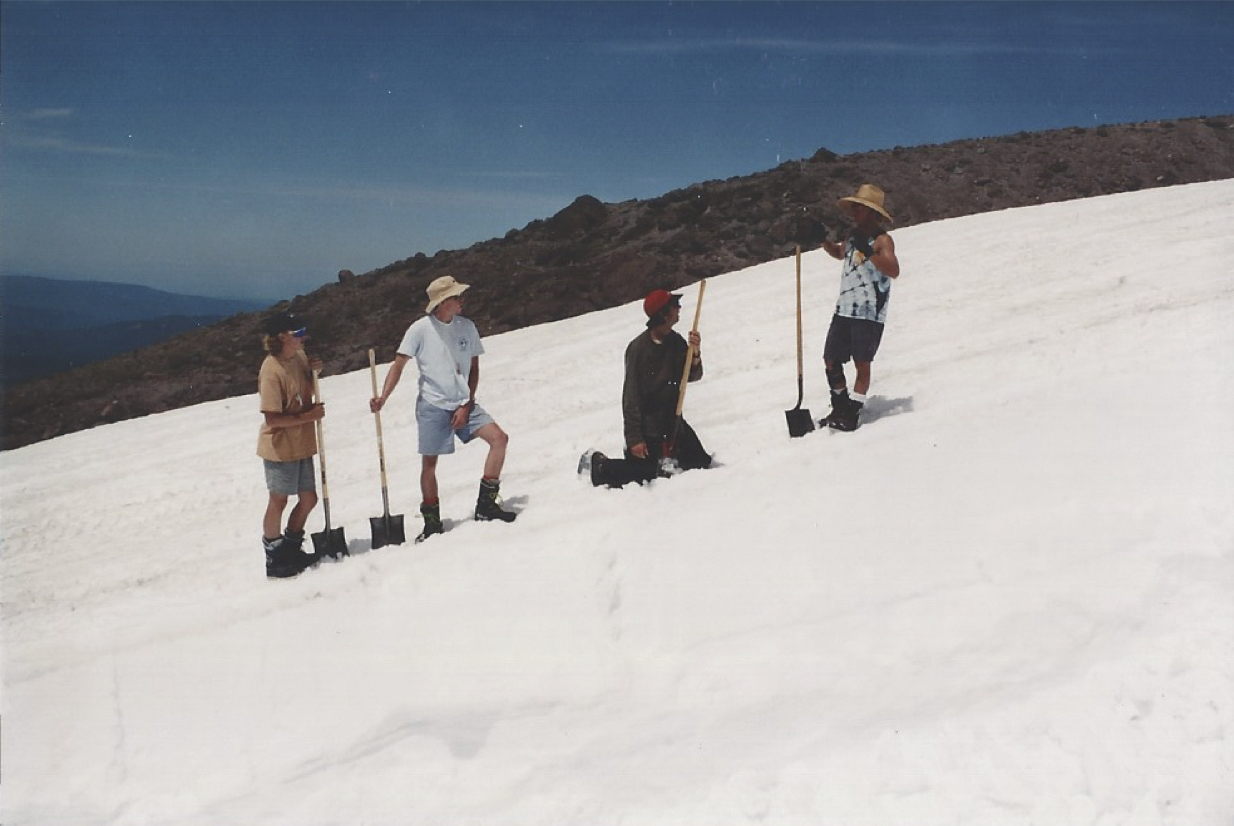
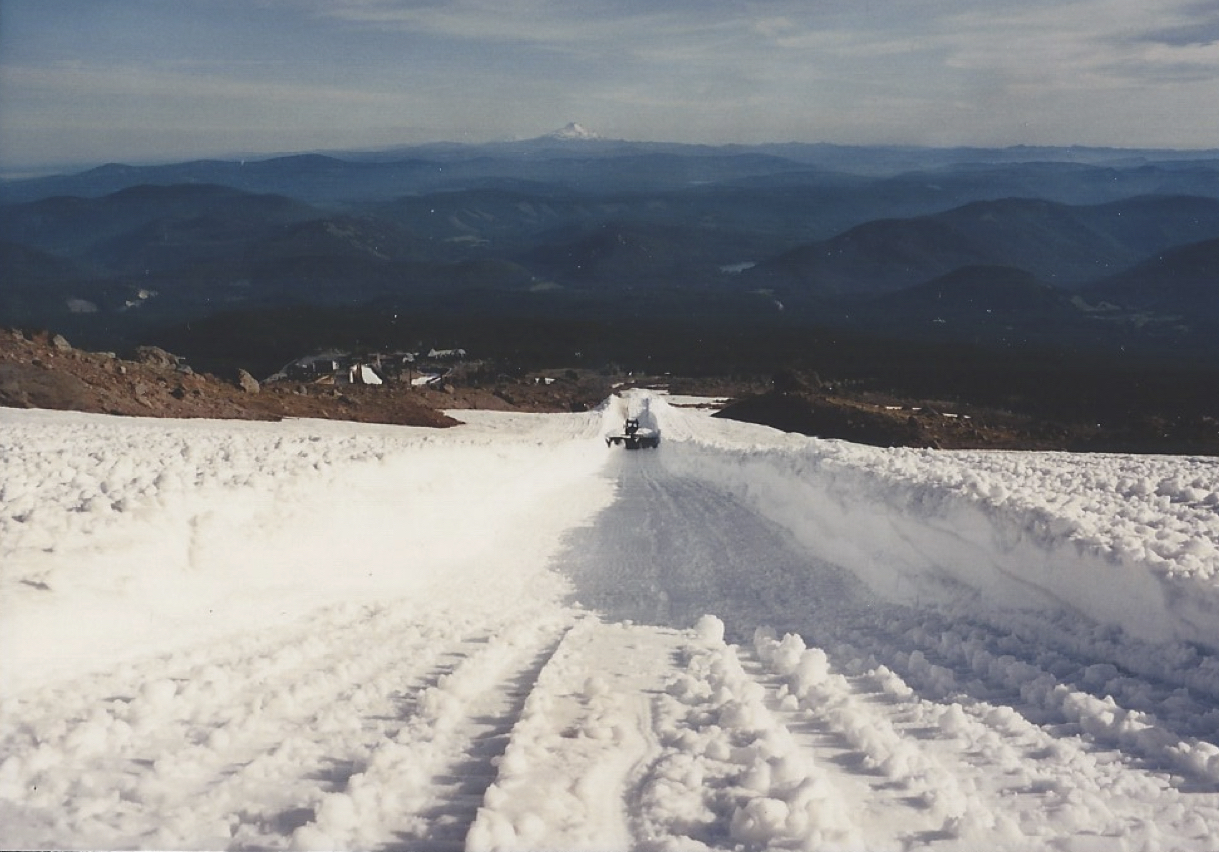
The First Diggers.
The need for pipe-diggers began solving itself when local riders Andy Wolf, Jason Neumann and Kurt Heine stumbled across the scene and gladly pitched in. It didn’t take long to assemble a crew of dedicated volunteers who were eager to ride the most insane pipe ever imagined! Digging was a ton of work but it was also a ticket to ride, so everyone was stoked and got it done. The result truly was the most amazing halfpipe ever!
Mt. Hood Makes a Name for Itself.
Mt. Hood became a focal point of snowboarding that summer. Pro-riders, media types, freeriders, skaters and crew all began descending on the once quiet ski-racer town of Government Camp. With no rules, street-level entertainment was at an all-time high. Progression exploded and the creative energy pushed snowboarding to new levels. Government Camp changed forever and the sport of snowboarding never looked back!
The Invert Ban is Lifted.
The ban on inverted air in ISF World Cup competition was lifted that following season. Many campers, coaches, staff, volunteers and people who made that summer a success, continued on to become legends and icons in snowboarding. These people fueled the progression of snowboarding and made positive, lasting contributions to the sport. High Cascade and Windells went on to push the limits of snowboarding with terrain parks and have since created the ultimate action-sports playground at Mt. Hood!
We Are All Camp People.
My camp pushed halfpipe to new levels and created a scene, but it was the long-term vision, commitment, hard work and perseverance of the people at USSTC, High Cascade, and Windells who worked tirelessly to expand the stage and develop the full potential of Mt. Hood, that brought camp to the amazing level we have today. Their efforts have established and secured the foundation for what is now “We Are Camp”. It’s an honor to be a part of the We Are Camp 30th Anniversary celebration and inspiring to see how We Are Camp has expanded the creative platform and vision of what is possible for generations to come!
Epilogue.
Karol Snowboarding Camp doubled in size over the next few years but the increasing competition and full-time commitment led me to shut its doors in 1992. I continued with alpine training camps and finished my professional snowboarding career training and competing full-time on the ISF world cup tour. I won my final ISF World Cup event in 1993 on the slopes of Buttermilk in Aspen, Colorado and have continued to ride, coach, invent, and work in product development ever since. I now live in Carbondale, Colorado where I consult, design, ride and produce 3D-Snowskates, Powsurfers and Snowboards as co-founder of www.soulmonkeysurf.com


